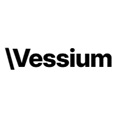Agentic AI Comparison:
Langroid vs Vessium
Introduction
This report compares two AI agent frameworks: Langroid and Vessium. Langroid is an open-source Python framework for building LLM-powered applications with a focus on multi-agent programming. Vessium is a commercial platform for creating AI agents, though detailed public information about its features is limited.
Overview
Langroid
Langroid is a lightweight, intuitive Python framework designed for building LLM-powered applications. It emphasizes a multi-agent programming paradigm, allowing developers to create complex AI systems through collaborative agent interactions.
Vessium
Vessium is a commercial platform for creating AI agents. While specific details about its architecture and capabilities are not widely available, it appears to offer tools for building and deploying AI agents in various applications.
Metrics Comparison
Autonomy
Langroid: 8
Langroid's multi-agent paradigm allows for high autonomy, with agents capable of independent decision-making and task delegation. Its architecture supports long-running autonomous processes.
Vessium: 7
While Vessium likely supports autonomous agent behavior, the lack of detailed public information makes it difficult to assess its full capabilities in this area.
Langroid appears to have a slight edge in autonomy due to its well-documented multi-agent architecture, but Vessium may offer comparable features that are not publicly detailed.
Ease of Use
Langroid: 7
Langroid offers a clean, intuitive API and promotes a conversational programming style, which can simplify complex LLM interactions. However, it requires programming knowledge and familiarity with Python.
Vessium: 8
As a commercial platform, Vessium likely prioritizes user-friendliness with potential GUI interfaces and pre-built components, though this is an inference based on typical commercial offerings.
Vessium may be easier for non-programmers to use, while Langroid offers a developer-friendly approach that could be more powerful for those with coding skills.
Flexibility
Langroid: 9
Langroid's open-source nature and support for various LLMs, vector stores, and tools provide high flexibility. Its lightweight architecture allows for easy customization and extension.
Vessium: 7
Commercial platforms often offer good flexibility within their ecosystem, but may have limitations compared to open-source alternatives. Without more information, it's difficult to assess Vessium's full flexibility.
Langroid likely offers greater flexibility due to its open-source nature and documented extensibility, but Vessium may provide sufficient flexibility for many use cases.
Cost
Langroid: 10
As an open-source project, Langroid is free to use, modify, and distribute. The only costs involved would be for the underlying LLMs and infrastructure.
Vessium: 6
As a commercial product, Vessium likely involves licensing or subscription fees. However, without pricing information, it's difficult to provide a precise assessment.
Langroid has a clear advantage in terms of direct software costs, but Vessium may offer value through support, maintenance, and potentially easier deployment that could offset its pricing for some users.
Popularity
Langroid: 6
While gaining traction in the developer community, Langroid is still a relatively new project. Its GitHub repository has over 1000 stars, indicating growing interest.
Vessium: 5
Information about Vessium's market presence and user base is not readily available, suggesting it may not have widespread adoption yet.
Both frameworks appear to be in relatively early stages of adoption. Langroid may have an edge in the open-source community, while Vessium's commercial nature could lead to different adoption patterns.
Conclusions
Langroid and Vessium represent different approaches to AI agent development. Langroid offers a flexible, cost-effective solution for developers comfortable with Python and seeking fine-grained control over their AI systems. Its multi-agent paradigm and open-source nature provide significant advantages in flexibility and customization. Vessium, as a commercial platform, may offer more streamlined development processes and potentially better support, which could be valuable for businesses seeking rapid deployment. However, the limited public information about Vessium makes a comprehensive comparison challenging. Developers and organizations should consider their specific needs, technical expertise, and budget when choosing between these options. For those requiring maximum flexibility and cost-effectiveness, and who have the necessary technical skills, Langroid appears to be a strong choice. For those prioritizing ease of use and potentially faster time-to-market, Vessium might be worth exploring further.

